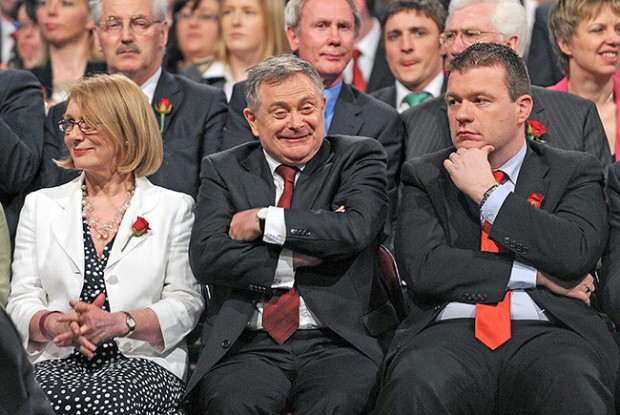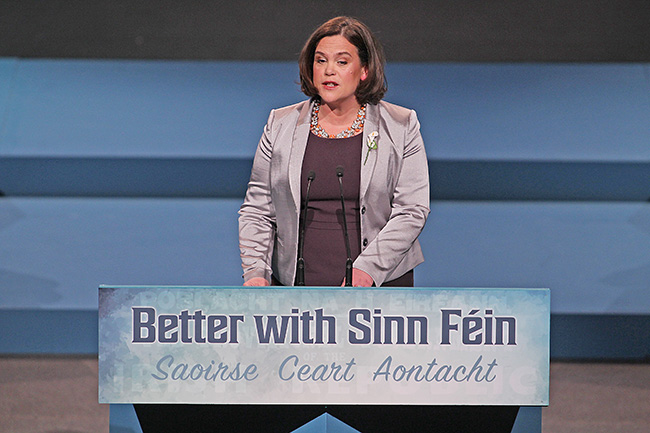6 June 2016 Edition
New politics? (Same old news)
Alan Kelly, Mary Lou and media highlights

FOR A BRIEF MOMENT I wondered how Labour TD Alan Kelly was dealing with the media tsunami coverage on his failed attempt to be the new Labour leader.
His comments, appearances, non-appearances, tweets and statements were seemingly wall-to-wall. But I can’t help thinking this is what he wanted to happen. And he had the powerful help of the Irish news media, willing conspirators who diverted a sizeable amount of their focus (and public attention) and space to Alan’s issues.
What is fascinating is how easy it was for this to happen and how little mainstream media comment there was about the imbalance in news reporting of the Irish Labour Party leadership ‘contest’. Kelly has been elevated in the news cycle yet again beginning with his appearance on the Late Late Show launching his leadership bid. This ran to his non-appearance at the first press conference of Brendan Howlin as the new Labour leader which overshadowed the coronation itself. Then came the subsequent tweets by “AK47”, particularly a photo from him on Twitter titled “The seven stages of leadership” showing seven pints of Guinness lined up, from full to empty. Then there was an ‘exclusive’ but widely-reported Mail on Sunday interview.
As I write this, Alan Kelly has just been on Tipperary FM radio, Brendan Howlin is on Newstalk, and the sphere of tweets and online news focus is in full spin again from radio to online to print and back again.
Interestingly, no discussion from either Kelly or Howlin on Labour policies.
Online brethren
We have a new government but it’s the same old news media moulding the political discourse. What is critical to this relationship is that the emerging online media is behaving in sync with their brethren in radio, TV and print.
Could you imagine the same amount of media coverage being given to Sinn Féin or AAA/PBP? Neither could I.
Sinn Féin announced their new Dáil frontbench spokespersons in early May. For online news website TheJournal.ie this was not news. Fair enough, you might say, but on 14 May The Journal ran an article on the Fianna Fáil women who “could be in line for a promotion” – yes, “could” – speculating on the new Fianna Fáil spokespersons and then added to that on 18 May with a “Meet the Fianna Fáil frontbench” article.
For Sinn Féin the largest party in Opposition (not keeping Fine Gael in power) it seems there is slanted media coverage. Other commentators such as Oliver Callan, writing in the Sun just before the February Dáil election, noted the “anti-Sinn Féin editorialising”.
An Phoblacht also reported in March on the analysis of Village magazine contributor Pádraig O'Mara on the disparities in coverage given to Sinn Féin in the run-up to the election, particularly the volume of negative reporting that Sinn Féin received.

• A 'Sunday Times' story about highlighters that didn't add up showed how shallow media attacks were
Miscalculated reporting
What has been deemed big news about Sinn Féin by The Sunday Times on 22 May reported that Mary Lou McDonald had ordered 576 highlighters from the Oireachtas stationery store in just eight weeks. In fact she had ordered four packs of 12.
The Sunday Times article was lifted by the Irish Independent, Mirror, the Irish Sun and a number of other online news sites. Sinn Féin had contacted the Sunday Times before publication cautioning that there must be an error but they went ahead published the story regardless (and without the health warning). Many hours of lobbying by Sinn Féin press officers eventually compelled all of the errant news services to take down or correct the false story that had been seen by countless thousands of people.
What this still boils down to with the news media, old and ‘new’, are the age-old questions – how is the news controlled and who controls what is printed in the papers, heard on radio, or seen on TV and the Internet?
Trend setters
In early May, Facebook admitted that their trending topics sections was not in fact driven by Facebook users but by journalist editors who checked where the news was being reported before they as media gatekeepers decided it could be deemed a trending topic.
The news sources the Facebook editors heavily relied on included Fox News and the BBC as well as the Guardian and The New York Times, the Gawker-owned Gizmodo blog revealed.
The Reuters Institute for the Study of Journalism at Oxford University produces an annual Digital News Report. Last year’s report included data on Ireland for the first time. They found that online news is dominated by the traditional media outlets such as RTÉ, Independent News & Media, The Irish Times followed by The Journal and the BBC, who make up the top five online news sources in Ireland.
Fascinatingly, 71% of the 1,500 Irish people in the survey had interest in the news while 46% trusted the news source. Irish journalists are “some of the heaviest Twitter users in the world”, according to Reuters.
So here we are with a new government in Dublin but, despite the growth in online and news media, it is the same old gatekeepers with the same old mentalities and biases controlling the news. That’s worth highlighting.




